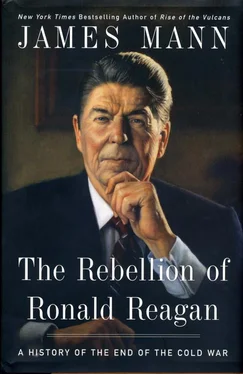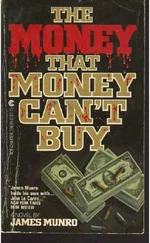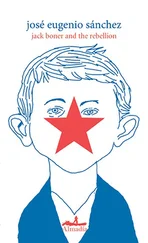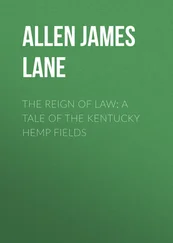In establishing her relationship with Reagan, Massie seems from the start to have relied heavily on their joint interest in religion. Her initial letter to Reagan, a thank-you note she wrote after their meeting in January 1984, said of the Soviet Union: “The most inspiring and hopeful aspect is the great renaissance of spirituality, particularly among the young.” A few weeks later, Massie sent the president and his wife copies of Land of the Firebird and her two other books, with a cover note that said: “It is said that God writes straight with crooked lines.” 5
Along with her interest in religion, Massie regularly advanced one other related theme: the idea that Reagan should draw a clear distinction between the Soviet Union and the Russian people. Massie was both an anti-Communist and a Russophile: she was antipathetic toward the Soviet regime and also deeply sentimental, if not mystical, about the Russian “soul.” The snippets of ordinary life inside the Soviet Union that she offered to Reagan during their meetings conveyed a sense of the distance between the Russian people and their Communist Party leaders. She reported to Reagan that people in Leningrad and Moscow talked of Russians as we or us, but referred to the Soviets as they or them . “Quietly, but unmistakably, every day in every way, the Russians are beginning to look and act more like Russians,” she said in one speech. 6
Massie’s way of looking at the Soviet Union had obvious appeal to Reagan, because it seemed to fit with the distinction he often made when talking about the United States: ordinary people (whom Reagan portrayed as humble but wise) versus the government (which was inherently remote and malign). Nevertheless, in some respects Massie’s portrayal also seemed to contradict some of the images of the Soviet Union that had been advanced throughout the years by American conservatives, including Reagan himself. She argued that the Soviet Union was not a monolith and that day-to-day life went on there outside the control of the authorities.
What Massie offered was a brand of Russian nationalism, but one that was different from the version put forward by Soviet authorities. She belittled what she called the “cult of World War II,” asserting that the Soviet regime stoked memories of what was called the Great Patriotic War in order to portray itself as the protector of Russian territory against invaders. This was a “manipulated” nationalism, Massie argued, in contrast to the more genuine version, which emphasized Russian religion, history, and culture. 7
Like everyone else who met Reagan, Massie found him to be opaque. (Even Nancy Reagan once said of her husband, “There’s a wall around him. He lets me come closer than anyone else, but there are times when even I feel that barrier.”) Massie, who had piqued Reagan’s interest enough to be invited back to talk with him over and over again, said in an interview two decades later, “Frankly, Reagan was the most closed, the most reserved person one could ever meet, and I found that interesting.” During their meetings, she said Reagan spent most of the time asking questions and listening to her talk about Russian life, without saying much. She gradually got a sense of what Reagan was seeking: “He was trying to understand the Russian character, he was trying to understand something about the people.” Most of the Soviet experts in the U.S. government didn’t talk or think like Reagan and weren’t attuned to his interests. Most of the CIA’s experts didn’t tell stories well; Massie did. 8
In the fall of 1985, as Reagan was preparing for his first summit with Mikhail Gorbachev in Geneva, the CIA launched an extensive campaign to get him ready. There were memos, briefing papers, and stacks of other material. CIA director William Casey arranged an hour-long briefing for the president with the CIA’s Soviet experts, led by Robert Gates, then the agency’s deputy director for intelligence. Gates and other CIA experts talked at some length about strategy and geopolitics, about Gorbachev and the Politburo, about Soviet defense spending and its role in the third world. They found that the president was not particularly interested. Reagan began to pay much closer attention when a CIA analyst named Kay Oliver began talking about daily life in the Soviet Union and about problems such as alcoholism, corruption, economic stagnation, and the revival of religion. “He was riveted by Oliver’s briefing, I think, because she described the Soviet Union in terms of human beings, everyday life, and the conditions under which they lived,” Gates later wrote. 9
During the weeks before this initial summit in Geneva, Reagan was determined to make sure that it would bear his own imprint. One of the common stereotypes about Reagan is that he was so passive he merely went along with what his subordinates told him. This was often true on routine matters, but on those few major events in which he took a special interest, Reagan could prove to be more actively engaged and more involved in minute details than even such notorious presidential micromanagers as Richard Nixon and Jimmy Carter. When State Department officials, in explaining the plans for the Geneva summit, made the mistake of referring to his private meeting with Gorbachev as a “tête-à-tête,” Reagan cut them short and banned the French phrase. “If we’re not careful, we’re going to go from tête-à-tête back to détente, ” he told them. “Let’s call it a ‘one-on-one.’” 10
This was mere semantics, but Reagan’s insistence on personal control went to the heart of the Soviet-American diplomacy as well. Throughout the fall of 1985, State Department officials and their Soviet counterparts tried to work out a joint communiqué that Reagan and Gorbachev could sign at the end of their talks in Geneva. These officials were merely following past practice; it was commonplace for American presidents and foreign leaders to arrive for a summit with the formal written results already settled before the start of the talks. Before the Geneva summit, to the dismay of officials at the State Department and National Security Council, Reagan adamantly refused to go along with this standard procedure. No precooked communiqué, the president ordered. “He wanted the meeting in Geneva to be his meeting; he believed any statement should be composed after he met Gorbachev, and should reflect what happened,” recalled Jack Matlock, then the Soviet specialist on Reagan’s National Security Council. Matlock admitted that, at the time, he thought the president was being unreasonable. But in hindsight, Matlock said, he realized Reagan had accurately perceived that a prearranged communiqué would be too constraining. “If we were to move away from the confrontational psychology that had marked relations up to then, it was better not to tie the hands of our leaders, even loosely, before they met,” said Matlock. 11
Soviet diplomats were particularly distressed when they learned about Reagan’s preparations for his first meeting with Gorbachev. Their principal source was Arthur Hartman, the American ambassador in Moscow, who came back to Washington to help with the summit and spoke during his stay with Soviet ambassador Anatoly Dobrynin. “In order to keep abreast of the times, Reagan was examining history to obtain a better idea of the Russian ‘soul,’ the Soviet Union and the motives behind its policy,” Dobrynin reported to Moscow after talking to Hartman. “He preferred oral reports and stories from people who had lived in the Soviet Union, especially those who had met Soviet leaders.” 12
Dobrynin’s sarcastic reference to Reagan’s study of the Russian “soul” hinted at how Reagan was borrowing from Massie and her ideas. During this period she was traveling back and forth to the Soviet Union for a book about Leningrad. White House records show that Reagan talked on the phone with Massie at her summer home in Maine in August and then met with her in the Oval Office on September 3, 1985, with Vice President Bush, McFarlane, and Matlock sitting in. Reagan had asked his schedulers to arrange for her to come to the White House before Massie departed for another trip to Leningrad in late September. 13The president was reading Massie’s Land of the Firebird during this period and asking senior American officials about the early Russian history he was gleaning from the book.
Читать дальше












